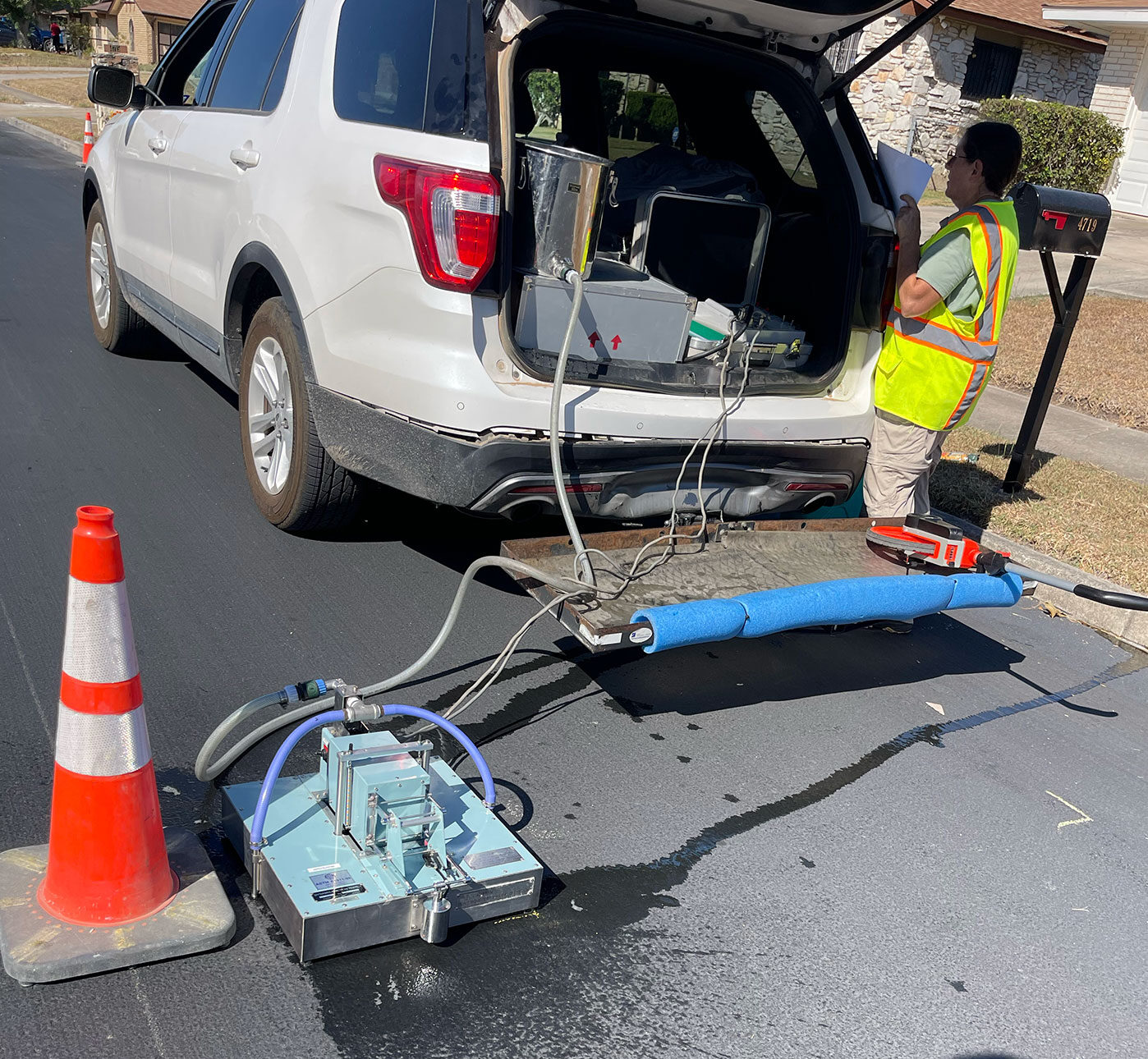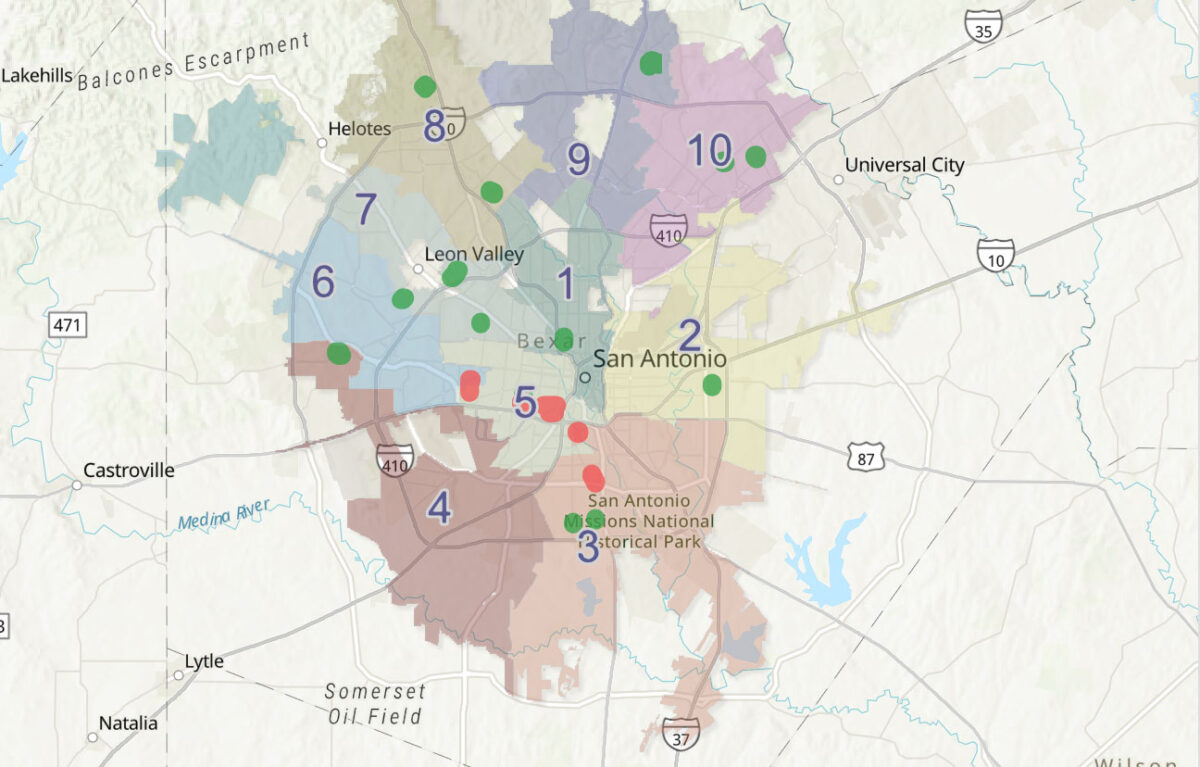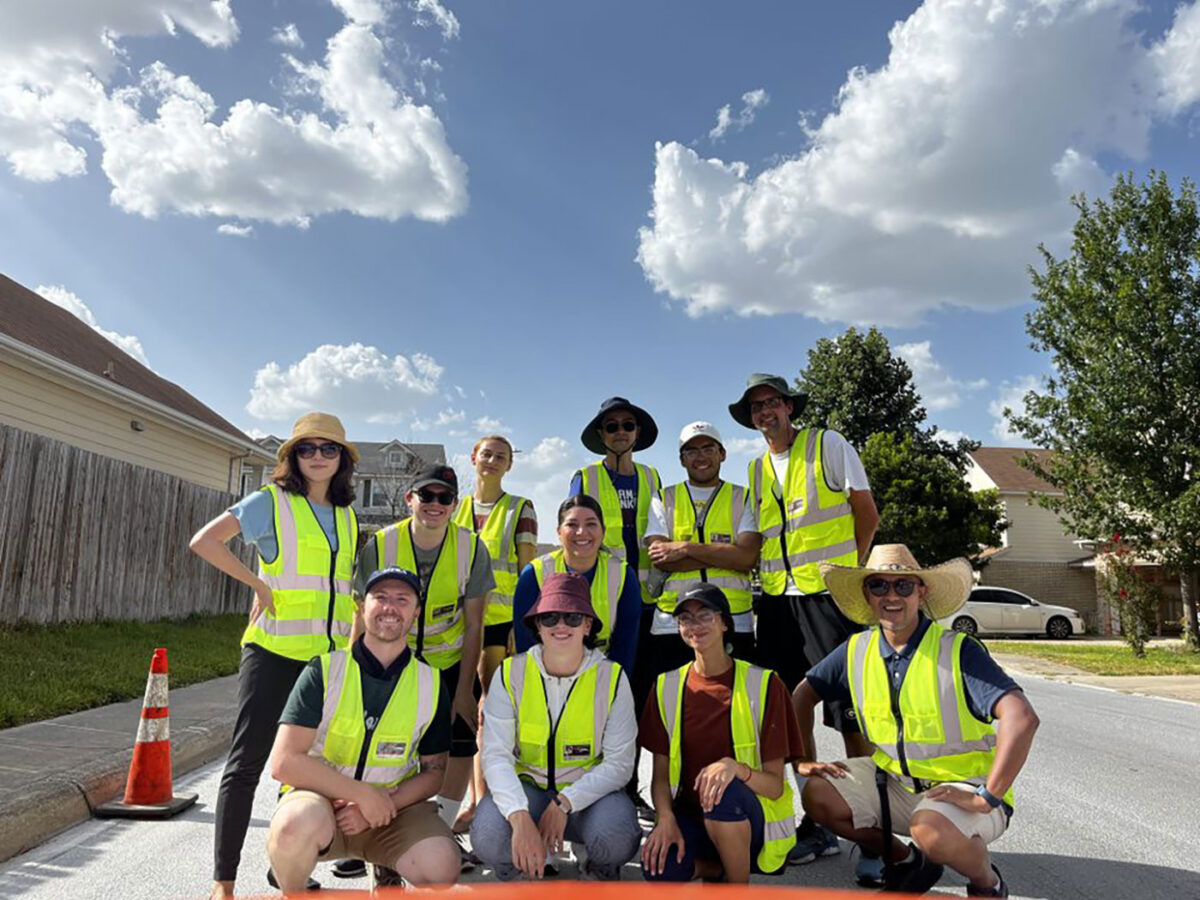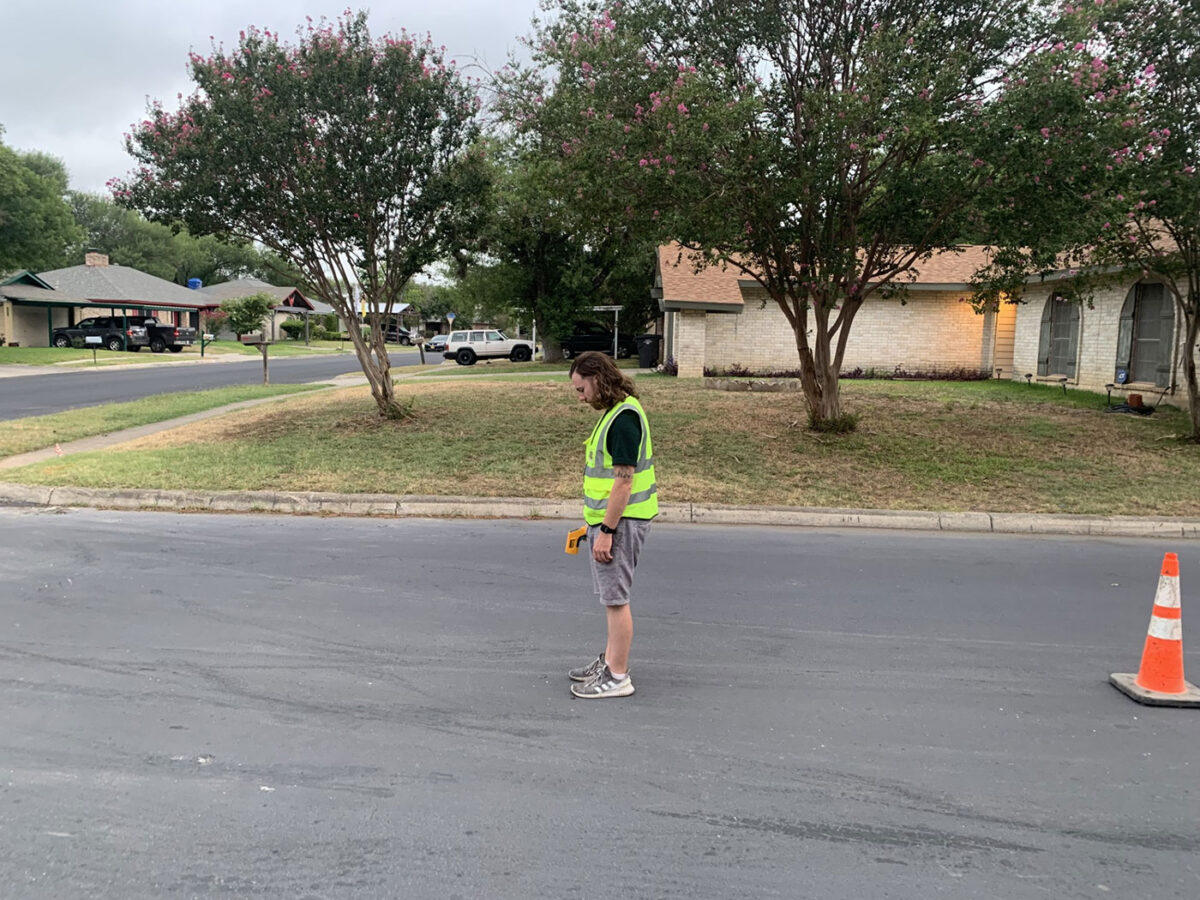The City of San Antonio is making the effort to help bring some relief to urban heat by designating dozens of cooling sites across the community, planting more trees and even replacing dark roof shingles as part of the Under One Roof program.
Roadways are a contributing factor to extreme heat conditions in San Antonio, as they are part of the reason heat islands are created. Urban surfaces such as roadways and rooftops absorb and emit heat to a greater extent than most natural surfaces, according to the Environmental Protection Agency.
San Antonio is one of the first cities in Texas to try to keep its constituents cool via their roadways with the help of a water-based asphalt treatment called cool pavement. The treatment reflects more sunlight while absorbing less heat and, in turn, reduces spikes in temperatures in the evening.
In 2023, the city added treatments to 10 small stretches of roadways across the 10 City Council districts.
To determine whether the effort would be effective for a city-wide application, the city partnered with researchers at UT San Antonio for two research projects. The first project, which was led by Neil Debbage, associate professor of political science and geography, being studied which cool pavement treatments would which one reflects reflectt he most heat. The second, led by Samer Dessouky, professor in civil and environmental engineering and construction management, and the second tested the durability of the three different treatments.

Reflecting the Heat
“They wanted us to see if these materials were actually performing the way the manufacturers claim they are supposed to,” Debbage, says. “We also wanted to determine which product might be best suited specifically for San Antonio so the City can deploy them at a larger scale.”
Debbage adds that the use of cool pavement in Phoenix and Los Angeles has previously shown the product’s potential to reduce surface temperatures.
The study, which was, conducted by Debbage, Wei Zhai, Esteban López Ochoa, Ryun Lee Jung, Allison Pineda, Emma Jones, Tabytha Clearwater, Sam Rueda, Tyler Pursch, Jasmine Renteria and Matt Kenney, took place between June and September of 2023, the hottest summer on record in San Antonio, evaluated six sites across the city.
The six sites consisted of treated and untreated sites, which served as baselines for those with the treatment.
The three treatments the team evaluated included PlusTi by Pave Tech, Durashield by GAF Streetbond and SolarPave by SealMaster.
During the process, the team collected data throughout the day and night to see how the treatments were responding to the day’s shifting temperatures. Debbage says that they were looking at three metrics: surface temperature, air temperature, and the wet-bulb globe temperature. “We wanted to understand how the performance might differ at different parts of the day,” Debbage added. “We would start in the morning at 6 a.m. at both sites to collect data and again at noon, and 4 p.m., which was the hottest part of the day and then again in the evening.”
The researchers found that the SolarPave treatment was more consistent and had a significant reduction in surface temperatures, with an average reduction of 3.58 degrees. The treated streets were 18 degrees cooler than fresh asphalt. It also exhibited the best adhesion strength, supporting its longevity on pavement surfaces.
Debbage and the team visited the sites during the summer of 2024 to see how the treatments have held up in a year’s timeframe.
“There were some concerns since the cool pavement products are pretty white, in terms of their bright white surfaces to reflect sunlight, that they might get dirty over time and reduce their impact,” Debbage says.
Debbage adds that SolarPave still seems to be the most consistent one for reductions in surface temperature.
Standing the Test of Time
Dessouky, along with Ahmad Masad ’24 and The Transtec Group, Inc., conducted pavement surface friction, texture and adhesion strength testing on four cool pavement treatments across 10 sites in the city.
They evaluated these treated sites against controlled sites, which did not receive treatment. This allowed for an evaluation of the “impact of the treatment on texture and friction properties.”
“With the applications of these treatments on top of the roadways there are specific standards that need to be met. Most importantly to what extent will this product last on the pavement. Because it’s an investment you want to make sure it lasts, at least from the city perspective, three to five years,” Dessouky says.
“We also wanted to make sure the applications have certain friction standards to provide skid resistance when drivers press on the brakes to come to a complete stop.”
“We found that the treatments have positive effect on the roadway surface. That gives us security and the confidence that this product should work,” Dessouky added. “Based off a two-year follow-up, we found that some products performed better than others.”
The team provided follow-up findings to the city’s Public Works Department and Office of Sustainability for them to review.


Moving Forward
With promising results, the City plans to expand its efforts in its fiscal year 2025 with an additional 22 miles of cool pavement.
“We’re coming in and helping cool the surface temperatures. The city manager allocated $5.8 million for additional investments for cool pavement. We’ll be able to add 22 miles of cool pavement during this fiscal year,” Leslie Antunez, CoSA senior sustainability administrator says. “It’s an active work in progress, but I’m really happy with the steps we’ve made so far and how we’re looking to continue.”

OTHER STORIES IN THE SERIES:
A group of UT San Antonio researchers led a study to determine which areas of San Antonio are most vulnerable to extreme heat.
Researchers from UT San Antonio are turning to AI models and digital twin technology to strengthen resiliency to urban heat in San Antonio’s Historic Westside community.
Researchers are partnering with the City of San Antonio to create innovative solutions to beat the heat.








No comment yet, add your voice below!